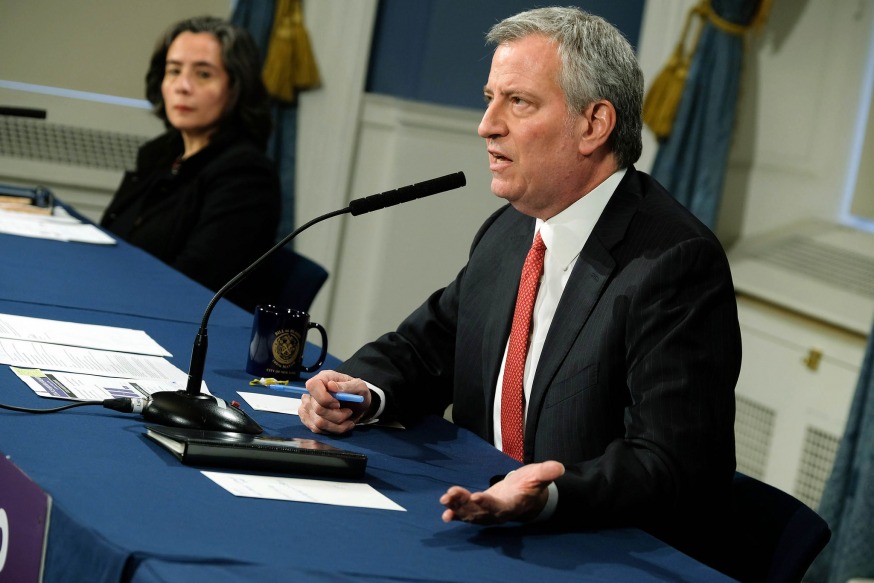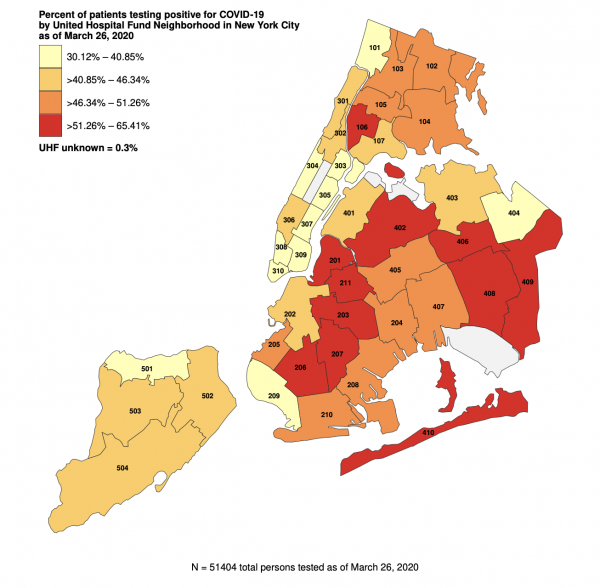
Mayor Bill de Blasio at a May 19 press briefing on COVID-19 (Ed Reed/Mayoral Photography Office)
March 27, 2020 By Allie Griffin
Mayor Bill de Blasio has repeatedly said that he has no plans of releasing a neighborhood breakdown of coronavirus cases, despite numerous requests from reporters and the public.
The mayor has only released borough breakdowns of the number of cases each day as the pandemic worsens and has said the city hasn’t seen any clusters.
In Queens, more residents have died from COVID-19 than in any other borough. The overall number of cases in Queens has swollen to more than 8,000 as of this morning and 124 of those cases resulted in deaths.
However, those singular figures are the only true data released for a county of 2.2 million people — larger than many cities across the U.S.
A neighborhood breakdown could help depict where resources and aid, as well as more public outreach and education is needed in Queens, experts say.
For example, Elmhurst Hospital has been called the “epicenter of the epicenter” after anecdotes from staff members and patients have painted a dire picture inside the hospital’s walls. In just a 24-hour span this week, the hospital lost 13 patients to COVID-19, officials said.
Council Member Francisco Moya — who was born in Elmhurst Hospital, later worked there and now represents the neighborhood — believes a neighborhood breakdown of COVID-19 cases, as well as data on the current operating capacity of hospitals across the city should be available.
“That information would reveal neighborhoods where the City needs to improve its community outreach and show us where we need to be allocating resources like ventilators, gloves and facemasks accordingly,” a spokesperson for his office said.
De Blasio said his administration has opted not to provide a neighborhood breakdown of cases because the information is continuously changing and he wants to avoid inaccuracies.
However, other places like Nassau County and Los Angeles provide daily numbers of COVID-19 cases for each community within their borders.
The Mayor’s Office released a map this evening that provides a neighborhood breakdown of coronavirus cases — but it only shows the percentage of those tested who came back positive. It doesn’t disclose the neighborhoods that have the most cases.
Theoretically speaking, one neighborhood could have tested 10 people and all 10 were positive for COVID-19, so 100 percent of cases would be positive. Meanwhile, another neighborhood could have tested 1,000 people and had 500 come back positive so only 50 percent of cases would be positive.
Council Member Moya will continue pushing for a higher level of transparency from the Mayor, his office said.
“This information is not academic; it’s part of the solution.”

2 Comments

So much for his promise to be the most open transparent open administration in the history of municipal government.
Get ready Astoria for a bunch of people from other neighborhoods to shop locally and walk our streets! Those that managed to get of town are very lucky. Careful when shopping, delivering food and going to Astoria Park.